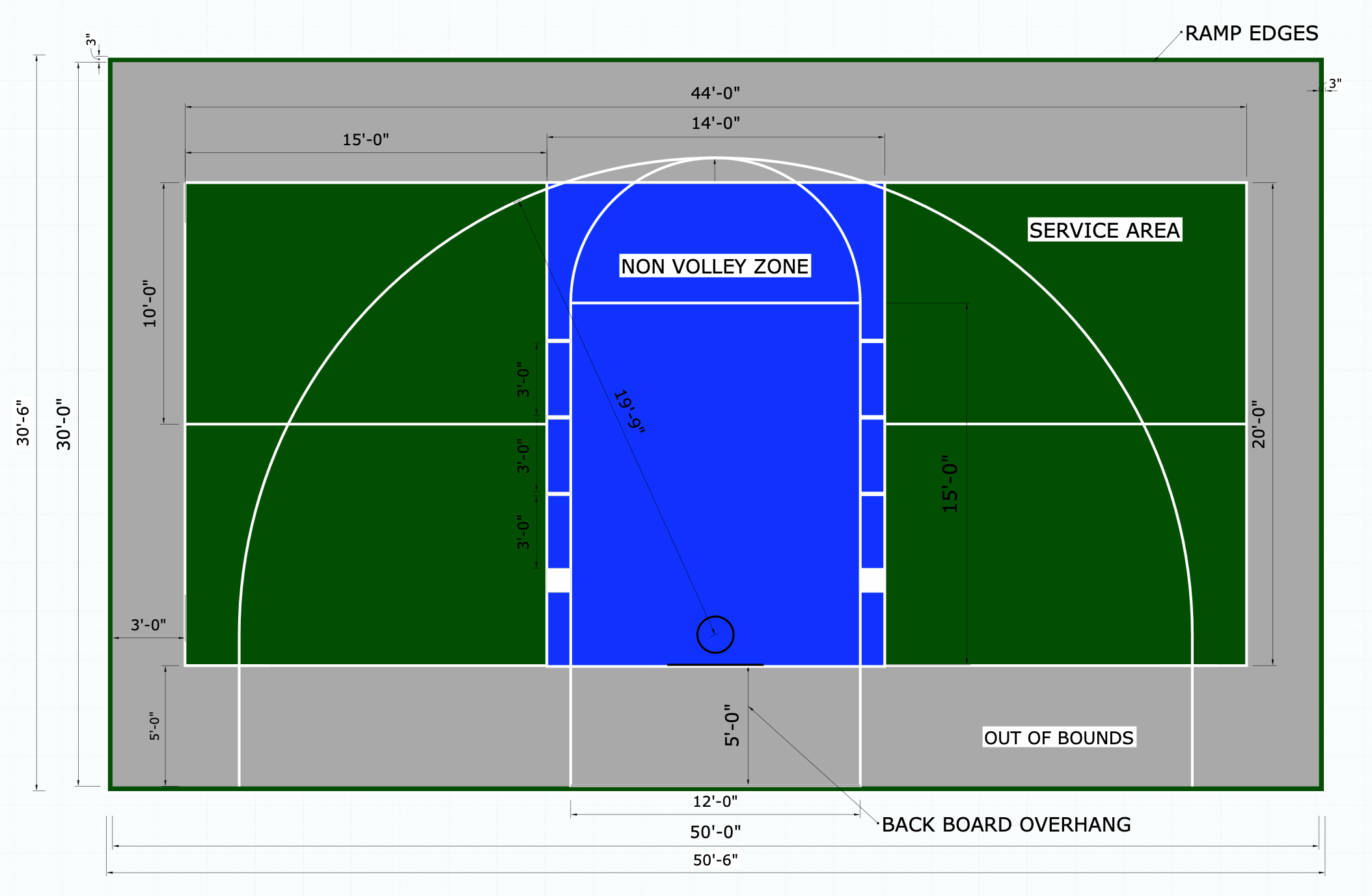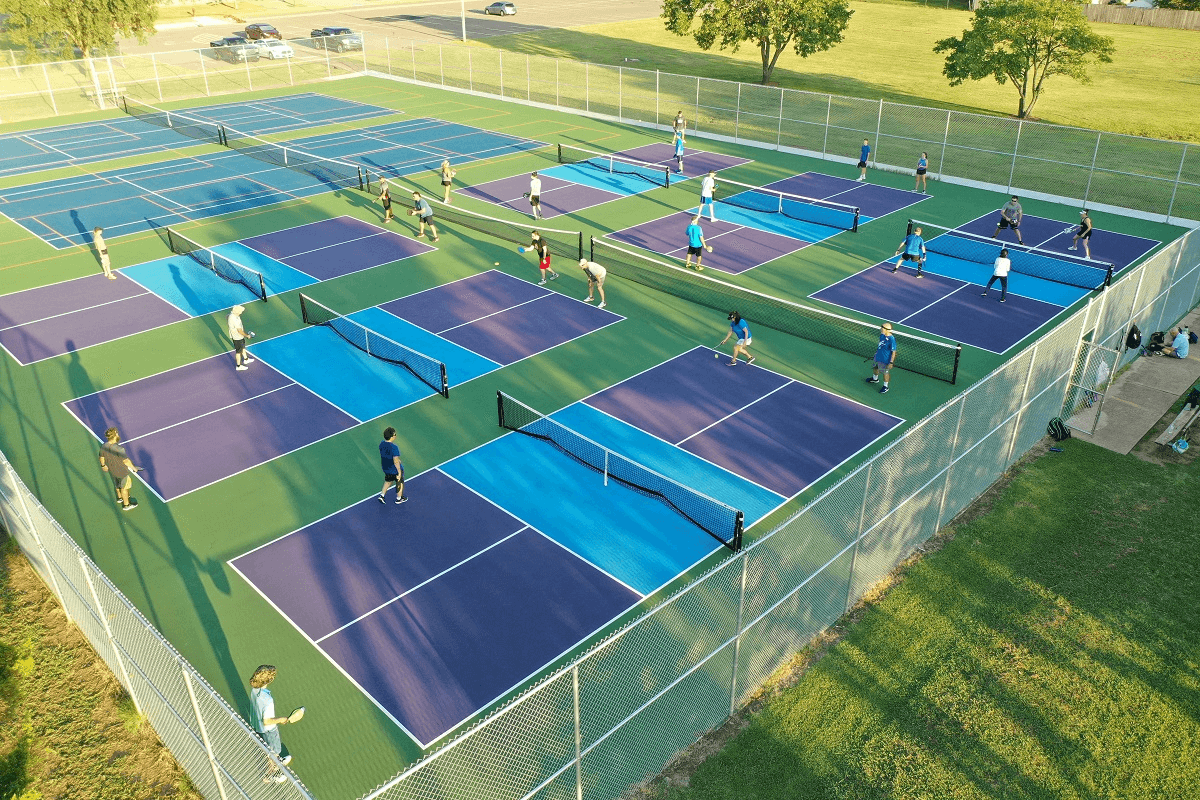Key Consider the Construction of Pickleball Judiciaries: From Site Selection to Last Coatings
The building and construction of pickleball courts encompasses a variety of essential aspects, beginning with the selection of a suitable website that stabilizes ease of access with environmental factors to consider. Necessary elements such as court dimensions, surface area materials, and drain systems significantly affect not just the top quality of play but additionally the long life of the facility. Additionally, interest to lighting and finishing touches can raise the general experience for players and spectators alike. Understanding exactly how each of these components interrelates might disclose understandings that are usually forgotten, prompting a closer evaluation of finest techniques in court construction.
Site Choice Criteria
When starting the construction of pickleball courts, it is important to pin down the website selection criteria that will certainly guarantee optimal playability and access. The place must be quickly reachable for players, ideally located near suburbs or recreation center, to encourage participation.
In addition, the surface needs to be level and stable, as uneven ground can cause security hazards and affect gameplay. Ample drainage is likewise critical; choosing a site with excellent water overflow will certainly help keep court conditions during adverse weather.
Another vital consideration is the schedule of utilities. Access to electricity and water is essential for illumination and maintenance functions. Furthermore, closeness to parking facilities is necessary, facilitating simple access for gamers and viewers alike.
Environmental factors can not be forgotten; natural shade from trees can enhance player comfort, while exposure to dominating winds may interfere with play. Finally, zoning guidelines and area assistance ought to be taken into consideration to make sure that the task straightens with regional standards and gets the support it requires for effective execution. By very carefully evaluating these requirements, stakeholders can create a welcoming and useful setting for pickleball enthusiasts.
Court Capacities and Layout
To make certain ideal gameplay and adherence to policies, the dimensions and design of pickleball courts must be carefully specified. A common pickleball court gauges 20 feet in size and 44 feet in size for both singles and doubles play. The recommended design consists of a non-volley zone, typically referred to as the "cooking area," extending 7 feet from the net on either side. This location is essential, as it influences gamer positioning and shot choice - Illinois and midwest.
The web height is set at 36 inches at the sidelines and 34 inches at the center, creating a mild dip that affects round trajectory. Court markings are similarly essential; lines ought to be 2 inches wide and distinctive in shade to make sure visibility.
Furthermore, a buffer zone bordering the court is a good idea, usually extending 5 to 10 feet past the sidelines and baselines to accommodate players' movements and improve safety. Correct design and measurements not only ensure compliance with official laws yet additionally improve the overall playing experience, accommodating both leisure and affordable play. Careful preparation in these areas is critical find this to the effective the original source building and construction of pickleball courts.
Surface Material Options
Selecting the ideal surface material for pickleball courts is essential for guaranteeing optimum gamer efficiency and safety and security. The choice of surface area can significantly impact gameplay, consisting of ball bounce, traction, and gamer convenience.
There are numerous alternatives available, each with its unique qualities. Asphalt is a preferred selection due to its toughness and low upkeep demands. It supplies a strong playing surface area that can endure various weather conditions but might require periodic resurfacing.
Concrete is one more extensively utilized material, offering outstanding longevity and a smooth coating. It enables constant round bounce however can be hard on gamers' joints, making it less desirable for long-term play without proper cushioning.
For those seeking boosted convenience and shock absorption, cushioned acrylic surface areas provide a feasible choice. These surface areas combine a base layer with an acrylic topcoat, supplying improved grip and a softer feel, which is helpful for lowering the risk of injuries.
Last but not least, artificial turf is acquiring grip, specifically for multi-purpose centers. Its flexibility and lower upkeep needs make it an eye-catching option, though it might not provide the exact same sphere action as conventional tough courts. Careful consideration of these options will certainly guarantee an optimum playing environment.
Drain and Lighting Considerations
Appropriate drain and effective lighting are necessary parts in the building and construction of pickleball courts, dramatically affecting both playability and security. Appropriate water drainage systems prevent water build-up, which can lead to slippery surfaces and damage to the court structure.
Lights is similarly important, particularly for courts planned for night usage. The placement of lighting fixtures need to be tactically intended to get rid of darkness and provide even distribution of light throughout the court.

Last Coatings and Upkeep
After resolving water drainage and illumination considerations, attention turns to the final finishes and continuous upkeep of pickleball courts. Illinois and midwest. The choice of surface area product is crucial, as it impacts both playability and sturdiness. Usual choices include acrylic finishes and specialized sporting activities surface areas that give optimal grip and padding. These finishes ought to be applied in numerous layers to make sure durability against climate elements and use.

Seasonal upkeep might consist of resurfacing every couple of years, depending on use and ecological elements. Correctly preserving internet, court lines, and surrounding areas is equally important to provide a risk-free and satisfying having fun experience. By buying high quality finishes and adhering to a structured upkeep timetable, facility owners can guarantee their pickleball courts remain in superb problem for many years ahead.
Conclusion
Finally, the successful construction of pickleball courts hinges on meticulous interest to a number of key elements. Site option ought to focus on availability and surface stability, while court dimensions and design have to stick to optimum criteria for gameplay. The selection of surface area material dramatically influences player safety and performance. In addition, efficient drain and appropriate illumination contribute to court longevity and presence. Ultimately, quality finishes and a robust upkeep schedule are crucial for protecting the court's condition, improving the overall experience for gamers and viewers alike.
Comments on “Exactly how to Choose the very best Pickleball Courts Design & Construction in Illinois and Midwest”